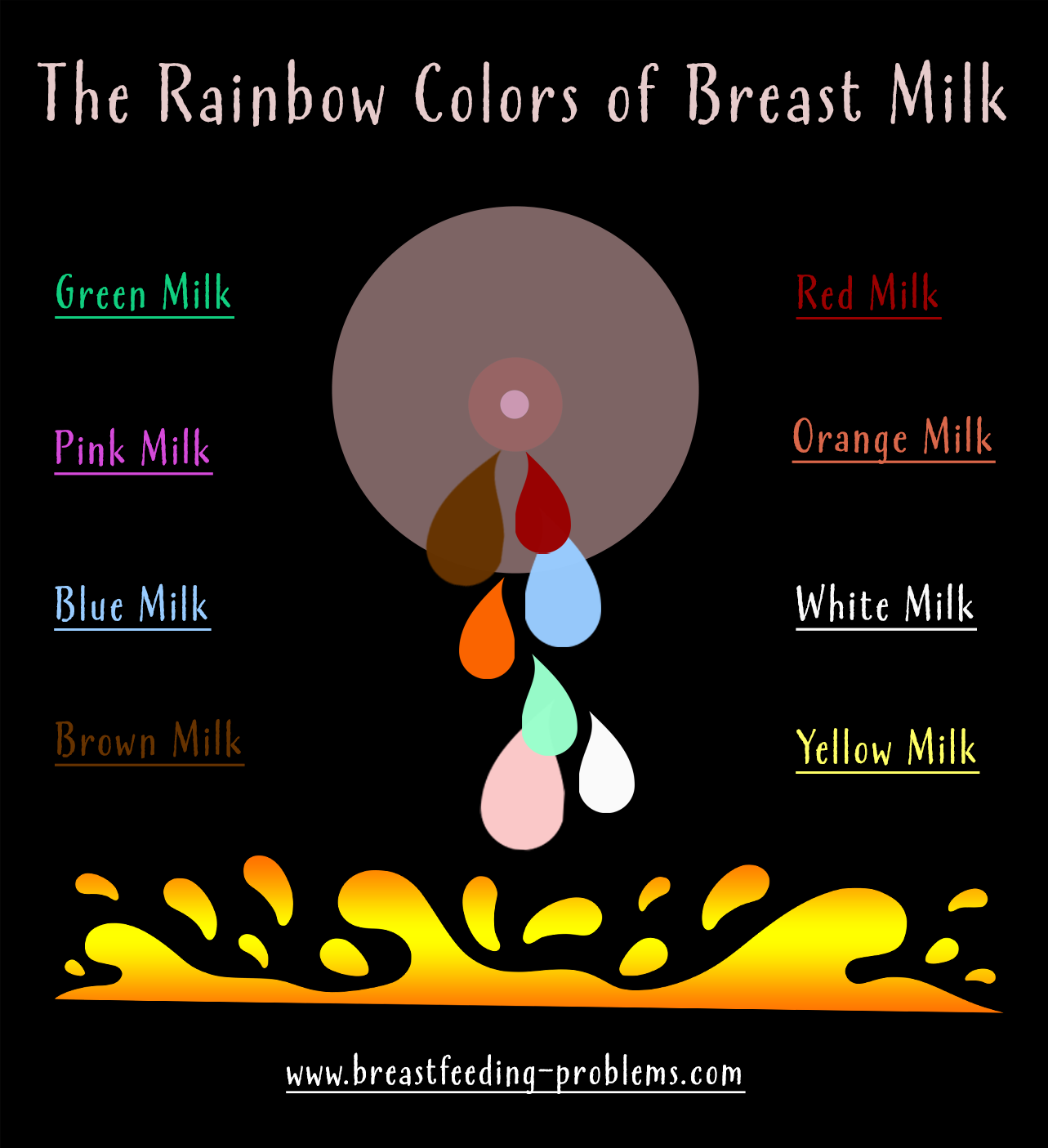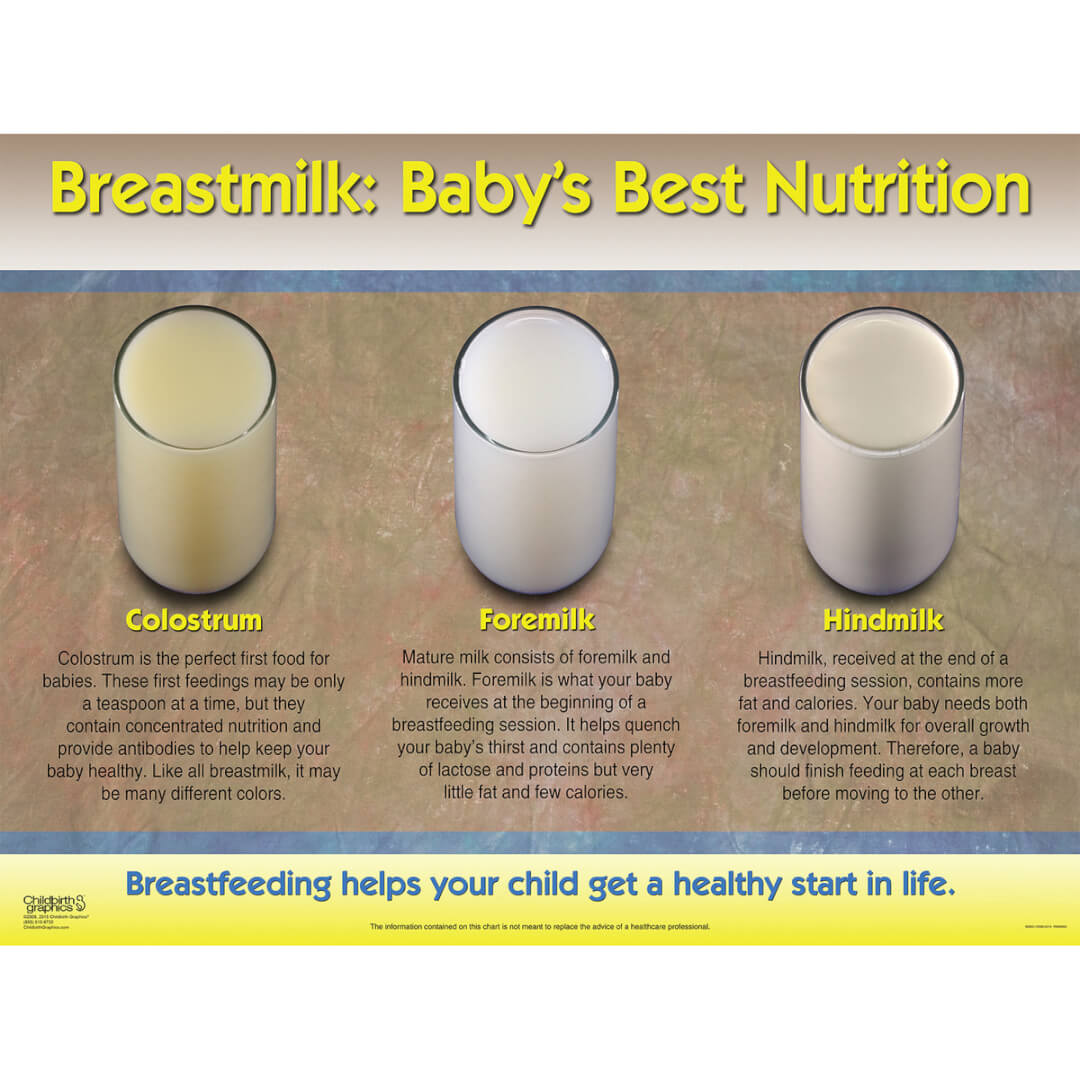Have you ever noticed that the breast milk from one breast seems to be a different color than the other? You’re not alone. This is a common phenomenon that often worries new mothers, wondering if their milk is “good enough” for their little one. Rest assured, there’s usually nothing to fret about. This article will demystify the varied hues of breast milk, offering a comprehensive understanding that will empower you, the breastfeeding mother.

Image: breastfeeding-problems.com
Breast milk is a miraculous substance, perfectly tailored to meet the individual needs of your baby. It constantly adapts, changing its composition in response to your baby’s growth and development. Likewise, the color of breast milk can fluctuate based on a variety of factors, and these variations are completely normal.
The Spectrum of Breast Milk Colors
Breast milk, in its purest form, is a beautiful ivory or pale yellow. But just like the spectrum of colors in a rainbow, your milk can display a range of variations, including:
- White: This is the most prevalent color of breast milk, and it often indicates a higher fat content.
- Yellow: A slightly yellowish hue can also be a sign of high fat content or it may indicate an elevated intake of certain pigments, such as beta-carotene, found in carrots and other brightly colored vegetables.
- Blue-Green: A rare but harmless occurrence, this color is often attributed to certain medications or supplements taken by the mother.
- Pink: Pinkish breast milk can be a result of red-colored foods consumed by the mother, like beets or watermelon, or even a result of a small amount of blood from cracked nipples.
Important Note: If you observe a significant color change in your breast milk, consult with your healthcare provider to rule out any potential underlying health concerns.
What Influences Breast Milk Color?
Several factors play a part in the color of your breast milk:
- Time of Day: Milk produced in the morning is often thinner and less concentrated than milk produced later in the day, which may appear slightly thicker and whiter.
- Dietary Choices: What you eat directly impacts the composition of your milk. Food like carrots, sweet potatoes, and turmeric can impart a yellowish hue, while foods like spinach and kale can give your milk a bluish-green tinge.
- Medication and Supplements: Certain medications and supplements can influence breast milk color, often due to the presence of pigments or their breakdown products in the milk.
- Baby’s Age and Feeding Frequency: As your baby grows, your milk adapts accordingly. Milk produced for a newborn will be different in color and composition than milk produced for a 6-month-old.
- Individual Variations: Every mother’s body is unique, meaning breast milk color can vary even between two women who consume the same diet and take the same medications.
When You Should Be Concerned About Breast Milk Color
While most color variations are harmless and normal, certain changes can signal a need for medical attention:
- Red, Bloody, or Brown: If your milk suddenly appears red, bloody, or brown, it’s important to contact your healthcare provider. This could indicate cracked or irritated nipples, a clogged milk duct, or, rarely, mastitis.
- Persistent Unusual Color: If your breast milk maintains a distinctly unusual color for an extended period, it’s best to consult your healthcare provider to rule out any underlying health issue.

Image: ubicaciondepersonas.cdmx.gob.mx
What Experts Say
Lactation consultants and pediatricians often reassure mothers that breast milk color variations are generally a normal phenomenon. They emphasize the importance of focusing on your baby’s overall health and development, as the color of your milk is not necessarily indicative of its nutritional value.
Actionable Tips for Breastfeeding Mothers
- Stay Hydrated: Drink plenty of fluids, especially water, throughout your breastfeeding journey.
- Fuel Your Body with Nourishing Foods: Consume a diverse and balanced diet, rich in fruits, vegetables, and whole grains.
- Embrace the Variations: Remember, breast milk color can and often will change, and these variations are completely normal.
- Communicate with Your Healthcare Provider: If you have any concerns about your breast milk color, don’t hesitate to reach out to your healthcare provider.
Breast Milk Different Color From Each Breast
Conclusion
Breast milk is a remarkable substance, and its color variations are a testament to its adaptability. Embrace the spectrum of colors and rest assured that your milk is perfectly designed to nourish your little one. Trust your body, focus on a healthy lifestyle, and don’t be afraid to seek guidance from your healthcare provider if you have any concerns. Ultimately, the most important thing is a happy and healthy baby. So relax, keep nursing, and savor the magic of breastfeeding!





